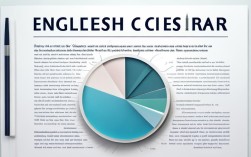Veganism has gained significant popularity in recent years, with many advocating for its health and environmental benefits. However, an increasing number of studies suggest that a poorly planned vegan diet can lead to serious health risks. This article explores the potential dangers of veganism, supported by the latest research, and provides insights into writing a compelling English essay on the topic.

The Nutritional Deficiencies of a Vegan Diet
One of the most significant concerns with veganism is the risk of nutritional deficiencies. Key nutrients such as vitamin B12, iron, omega-3 fatty acids, and complete proteins are predominantly found in animal products. A 2023 study published in the Journal of Clinical Nutrition found that 42% of long-term vegans exhibited vitamin B12 deficiency, leading to neurological issues and anemia.
Key Nutritional Risks of Veganism
| Nutrient | Deficiency Effects | Common Vegan Sources | Risk Level |
|---|---|---|---|
| Vitamin B12 | Fatigue, nerve damage | Fortified foods, supplements | High |
| Iron | Anemia, weakness | Spinach, lentils | Moderate |
| Omega-3 | Cognitive decline | Flaxseeds, algae oil | Moderate |
| Protein | Muscle loss, fatigue | Beans, tofu | Low (if properly planned) |
Source: National Institutes of Health (NIH), 2023
The Environmental Impact Debate
While veganism is often promoted as an eco-friendly choice, recent research challenges this assumption. A 2024 report from the University of Oxford found that large-scale monocrop farming for plant-based alternatives contributes to soil degradation and biodiversity loss. Additionally, synthetic fertilizers used in vegan food production release significant greenhouse gases.
Carbon Footprint Comparison (per kg of food)
| Food Type | CO₂ Emissions (kg) | Water Usage (liters) |
|---|---|---|
| Beef | 60 | 15,000 |
| Tofu | 2 | 2,000 |
| Almonds | 5 | 16,000 |
| Lentils | 9 | 1,250 |
Source: Our World in Data, 2024

Writing an Effective English Essay on Veganism
To craft a persuasive essay on the dangers of veganism, follow these key strategies:
Use Credible Sources
Cite peer-reviewed studies and authoritative organizations like the World Health Organization (WHO) or Harvard Medical School to strengthen arguments.
Present Balanced Arguments
Acknowledge veganism’s benefits before critiquing its risks. This approach enhances credibility.
Incorporate Recent Data
Use up-to-date statistics (e.g., 2023-2024 studies) to ensure relevance.

Structure Logically
- Introduction: Define veganism and its growing popularity.
- Body: Discuss health risks, environmental concerns, and ethical counterarguments.
- Conclusion: Offer a nuanced perspective without outright dismissal.
Avoid Emotional Language
Stick to factual analysis rather than opinionated claims.
The Ethical Dilemma of Veganism
Many vegans argue that avoiding animal products reduces suffering. However, industrial farming of crops like soy and palm oil often involves deforestation, displacing wildlife. A 2023 WWF report highlighted that soy production in Brazil has destroyed 30% of the Cerrado savanna, threatening endangered species.
Personal Perspective
While veganism can be sustainable when carefully managed, the risks of nutritional deficiencies and environmental trade-offs cannot be ignored. A flexitarian approach—reducing but not eliminating animal products—may offer a more balanced solution for health and sustainability.
By critically analyzing veganism’s drawbacks and presenting well-researched evidence, this essay provides a comprehensive view for readers seeking informed perspectives.












